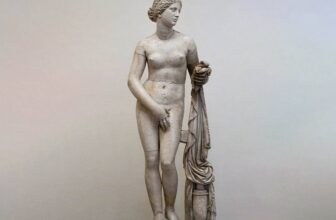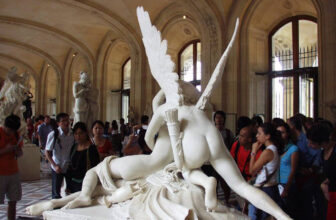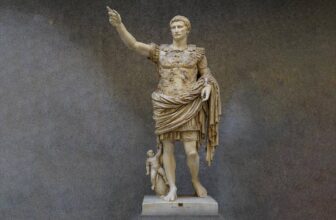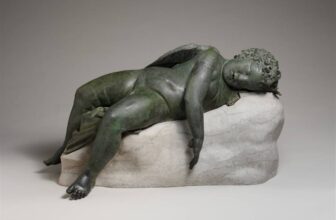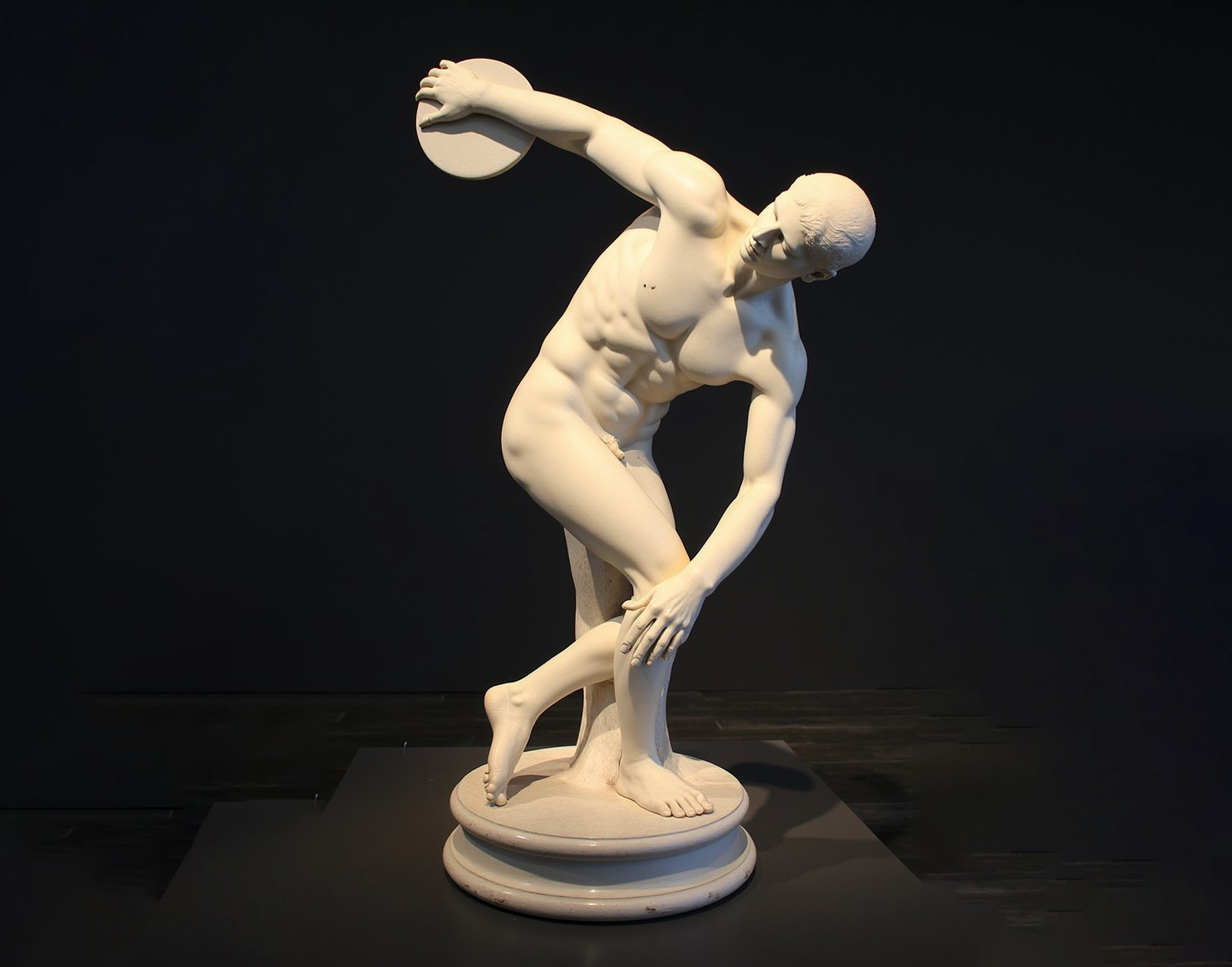
What Is the Symbolism of the Discobolus Sculpture
The Discobolus, or “Discus Thrower,” is one of the most iconic sculptures of the ancient world. Though many people today recognize it from marble reproductions in museums, the original masterpiece was a bronze sculpture that captured the athleticism, harmony, and grace that defined classical Greek art. But what happened to this famed bronze original? Who was the genius behind its creation? What was the sculpture’s spiritual and cultural significance? And can it still serve as a compelling piece in modern settings like gardens? This deep dive will explore the full story of the Discobolus, from its mysterious origins and tragic disappearance to its lasting influence across centuries.
Who Created the Discobolus?
The Discobolus was sculpted by the ancient Greek artist Myron of Eleutherae, a prominent sculptor who flourished during the early Classical period around 460–450 BCE. Myron was renowned for his ability to capture motion and dynamic realism in his sculptures, a radical departure from the stiff and stoic forms of earlier Archaic art. He was particularly skilled in representing the human body in motion, making him the perfect artist to tackle a subject like the discus thrower, an athlete frozen at the peak moment of his exertion.
Though little of Myron’s original work survives, ancient writers such as Pliny the Elder and Pausanias praised his mastery. His Discobolus was especially celebrated, not only for its technical precision but for the emotional neutrality on the athlete’s face, a hallmark of Classical art, which emphasized balance and idealism.
What Was the Original Material of the Discobolus?
The original Discobolus was made of bronze, a material highly favored by ancient Greek sculptors. Bronze was durable, malleable, and allowed for dynamic poses that were difficult to achieve in marble. Sculptors would use the lost-wax casting method, enabling them to reproduce intricate anatomical details and lifelike textures. This technique also allowed for more freedom in terms of posture and balance.
The dynamic twist of the Discobolus’s torso, his outstretched arms, and the tension in his bent knees would have been more structurally sound in bronze than in marble. In marble copies, additional supports such as tree stumps and connecting struts are often added to prevent breakage, concessions that were unnecessary in the original bronze.
What Happened to the Bronze Discobolus?
Sadly, the original bronze Discobolus has been lost to history. Like many ancient Greek bronzes, it likely met its end either by being melted down for its valuable metal or destroyed during war, conquest, or periods of cultural transition. During the Roman conquest of Greece and later the rise of Christianity, countless pagan artworks were dismantled or repurposed. Bronze, being both valuable and reusable, was especially vulnerable. Statues were often melted for coins, weapons, or other utilitarian needs.
All that remains of Myron’s original masterpiece are Roman marble copies, the most famous being the Discobolus Palombara, discovered in 1781 at a Roman villa near the Esquiline Hill and now housed in the National Roman Museum (Palazzo Massimo alle Terme) in Rome.
Another notable version is the Townley Discobolus, a slightly less complete copy held in the British Museum. These copies, though not as dynamic or technically impressive as the bronze original, provide an essential window into Myron’s vision and the Classical ideal of physical perfection.
Why Did So Few Greek Bronze Sculptures Survive?
The tragic scarcity of original Greek bronze sculptures is due to a combination of factors:
Material Reuse: Bronze was expensive and highly sought after. Many statues were looted and melted down to make weapons, coins, and tools, especially during times of war or economic hardship.
Natural Disasters and Decay: Over centuries, earthquakes, fires, and erosion destroyed many ancient cities, burying or damaging sculptures beyond repair.
Cultural Shifts: With the rise of Christianity, many pagan symbols and artworks were systematically destroyed. Statues of gods, athletes, and nude figures were seen as heretical.
Roman Reproduction Preference: The Romans made marble copies of many Greek bronzes, often preferring marble for its aesthetic and availability. These copies sometimes replaced the originals in public and private collections.
The few surviving bronze sculptures that exist today were often preserved by unusual circumstances, buried by volcanic eruptions like at Herculaneum, sunk in shipwrecks, or hidden underground in temples and sanctuaries.
What Does Discobolus Mean in Greek?
The word Discobolus (Greek: Δισκοβόλος, Diskobolos) literally translates to “Discus Thrower.” It derives from diskos (δίσκος), meaning “discus,” and ballō (βάλλω), meaning “to throw” or “to hurl.”
In ancient Greek culture, the discus throw was part of the pentathlon, an athletic event in the Olympic Games that included running, jumping, wrestling, javelin, and discus throw. The discus was not just a sport; it was a test of grace, control, and harmony, ideal values in the Greek athletic and philosophical mindset.
Where Is the Real Discobolus?
While the original bronze Discobolus is lost, the most faithful and complete marble copy, the Discobolus Palombara, is currently located in the:
National Roman Museum, Palazzo Massimo alle Terme, Rome, Italy.
Another notable version, the Townley Discobolus, is in:
The British Museum, London, UK.
Several other copies or fragments can be found in museums across Europe, including the Vatican Museums and the Glyptothek in Munich.
The Discobolus is a symbol of:
Physical Perfection: The sculpture celebrates the idealized male form, muscular, proportioned, and symmetrical. Ancient Greeks believed that physical beauty was a reflection of moral and intellectual virtue.
Moment of Tension: Myron captures the athlete in a split second of perfect balance, right before he releases the discus. It’s a portrayal of frozen motion, showcasing harmony in chaos, control in action.
Heroic Individualism: Athletes in ancient Greece were celebrated as heroes. Their physical achievements mirrored the virtues of bravery, discipline, and excellence (areté).
Human Potential: The sculpture embodies the belief that humans, through training and intellect, could strive toward perfection and approach divinity in form and function.
What Is the Spiritual Meaning of Discobolus?
Beyond physical beauty, the Discobolus holds spiritual and philosophical significance:
Balance of Body and Mind: In Greek philosophy, especially among the followers of Pythagoras and later Plato, harmony was divine. A balanced body reflected a balanced soul.
Unity with Nature and Cosmos: The circular motion of the discus evokes the cycles of nature and celestial harmony. The athlete becomes a metaphor for man’s place in the cosmos, moving with intentional rhythm and purpose.
Transcendence through Discipline: The act of training for the pentathlon was seen as a moral and spiritual journey. The athlete’s physique and focus symbolize the triumph of order over chaos, of will over weakness.
In this sense, the Discobolus is not just a sportsman, but a spiritual aspirant, a reminder of what humans can achieve when they align their physical, mental, and spiritual faculties.
Is the Discobolus Sculpture Suitable for Garden Art?
Absolutely. The Discobolus, with its timeless elegance, makes an excellent garden sculpture, especially in settings that favor classical aesthetics. Here’s why:
1. Classical Beauty
Its form exudes the balance, grace, and proportion that have defined beauty for millennia. Placed in a garden, it brings a touch of the ancient world into the natural environment.
2. Symbolic Resonance
As a representation of strength, focus, and harmony, the Discobolus can inspire mindfulness and tranquility in a garden setting, a space often associated with relaxation and contemplation.
3. Dynamic Movement
The sculpture captures a fleeting moment of action, infusing the garden with a sense of energy and liveliness. It contrasts beautifully with the stillness of nature.
4. Weather Resilience
Modern replicas of the Discobolus are typically made from bronze, resin, or weather-treated stone, making them durable and well-suited for outdoor display.
5. Cultural Sophistication
Displaying the Discobolus in a garden is also a statement of taste and cultural appreciation. It reflects a knowledge of history, philosophy, and the arts.
The Eternal Discus Thrower
Though the original bronze Discobolus has been lost, its impact is eternal. Through Roman copies, modern reproductions, and scholarly reverence, Myron’s vision of idealized motion and balance continues to resonate.
The Discobolus is more than an artwork. It is a metaphor for the pursuit of perfection, the discipline of the athlete, and the harmony of the cosmos captured in human form. It stands as a testament to the genius of ancient Greek art and a continuing source of inspiration for art lovers, historians, and philosophers alike.
Whether gracing a museum pedestal or enhancing a tranquil garden, the Discobolus remains an enduring symbol of beauty, discipline, and the timeless human spirit.
